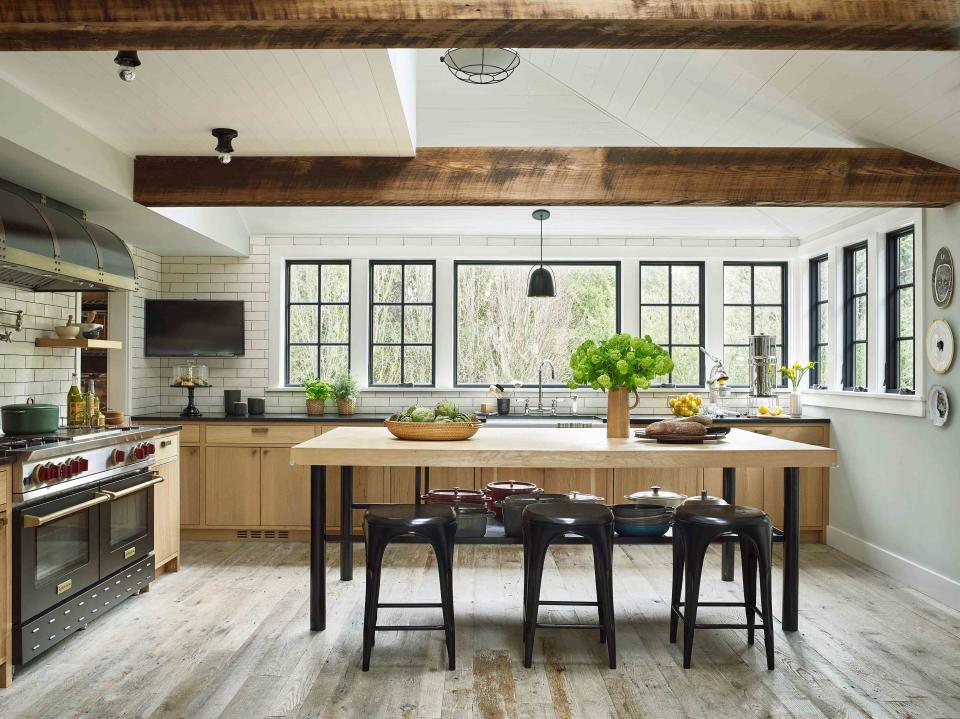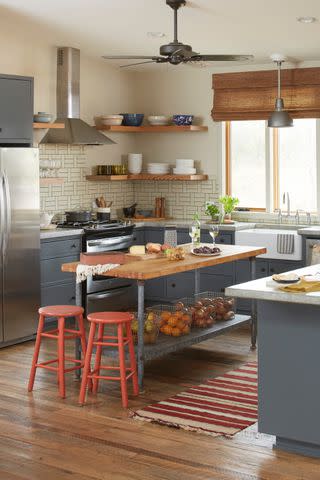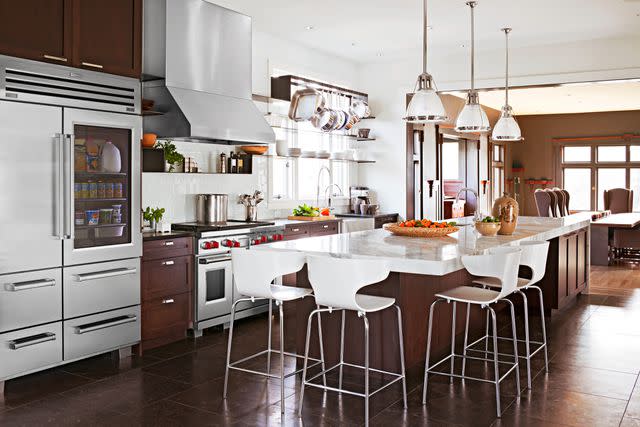How To Pull Off a Pretty and Practical Industrial Kitchen at Home
- Oops!Something went wrong.Please try again later.
Inspired by your favorite cooking show? Here’s how to bring the industrial kitchen look to your own home without taking it too far.

Tria Giovan
Every avid home chef secretly believes that with a little training and the right equipment, they could whip up Michelin Star-worthy meals for their friends and family on the regular. While we can’t help with the cooking classes, we’ve got some ideas for creating a kitchen worthy of your culinary dreams.
Industrial kitchens are sleek spaces made to be so simple and efficient that the focus is on the food being made instead of the design itself. That said, there’s something really lovely about the clean lines, smooth surfaces, and modern appeal this kitchen scheme brings.
But how do you achieve the spare beauty of the industrial kitchen without making it so plain that it doesn’t feel like a family space? We’ve gathered some expert tips that’ll help you design a restaurant-quality kitchen without sacrificing the warmth that draws your guests to gather in the heart of your home.
Related: 20 Industrial Kitchens That Mix Modern and Vintage
What Is an Industrial Style Kitchen, and Why Is the Style So Popular?

Adam Albright
“The industrial style is typically characterized by a raw, unrefined aesthetic with emphasis on practicality and durability,” says designer Kristin Marino of KozyKasa. “A few key features are reclaimed woods, distressed finishes, concrete, and stainless steel. You often see exposed piping and air ducts as well.”
In other words, this style emphasizes function in the way a professional kitchen would, including finishes that enhance the cooking experience while also being easy to clean and maintain.
“There has been a rise in the desire for minimal and simplistic interiors, which the industrial style often has,” says Marino. “Clean lines and essential elements resonate with the desire for a simple and clutter-free environment. Additionally, the use of low-maintenance materials is appealing to buyers!”
Another reason for the industrial kitchen’s rise in popularity? Food-centric TV shows. From reality shows like Top Chef to dramas like The Bear, home chefs everywhere are aspiring to have the sort of setup that allows them to live out their favorite foodie fantasies from the comfort of their own home.
Related: Homeowners Are Gravitating Toward Industrial-Style Kitchens This Summer
How Can You Try This Trend at Home?

John Granen
The primary concern of an industrial kitchen is practicality. This sort of kitchen benefits from the simple appeal of stainless-steel appliances and countertops, unadorned backsplashes, and open shelving housing everything you need at arm’s reach. You can invest the money you saved on pricey finishes into high-quality cooking equipment that will make creating delicious dishes a breeze.
Just keep in mind that while the functionality of a restaurant kitchen is appealing, it’s still your home, so you don’t want the design to come out too commercial.
“It’s important to balance this look with warmth and other cozy materials to prevent it from feeling too cold and stark,” says Marino.
Related: Industrial Meets Rustic in This Kitchen
One way to do that is by choosing paint colors carefully. “Opt for a warm color palette that includes neutral and earthy hues to counteract the coolness of the industrial materials,” says Marino.
After setting the tone with the walls, consider how the other major elements in the space could enhance the overall feel of the kitchen.
“Wood and brick accents are another great element to include,” says Marino. “Wooden cabinetry and/or floating shelves against a brick (faux or real!) will help bring natural warmth to your space that helps soften the industrial look.”
As always, it’s the finishing touches that allow your personality to shine through, creating a room that’s homey and unique. Don’t be afraid to hang your grandmother’s gnocchi board on the wall or display the family china next to your set of chef’s knives. With meaningful details like these, your kitchen will always exude warmth—no matter how streamlined your setup is.
For more Better Homes & Gardens news, make sure to sign up for our newsletter!
Read the original article on Better Homes & Gardens.

